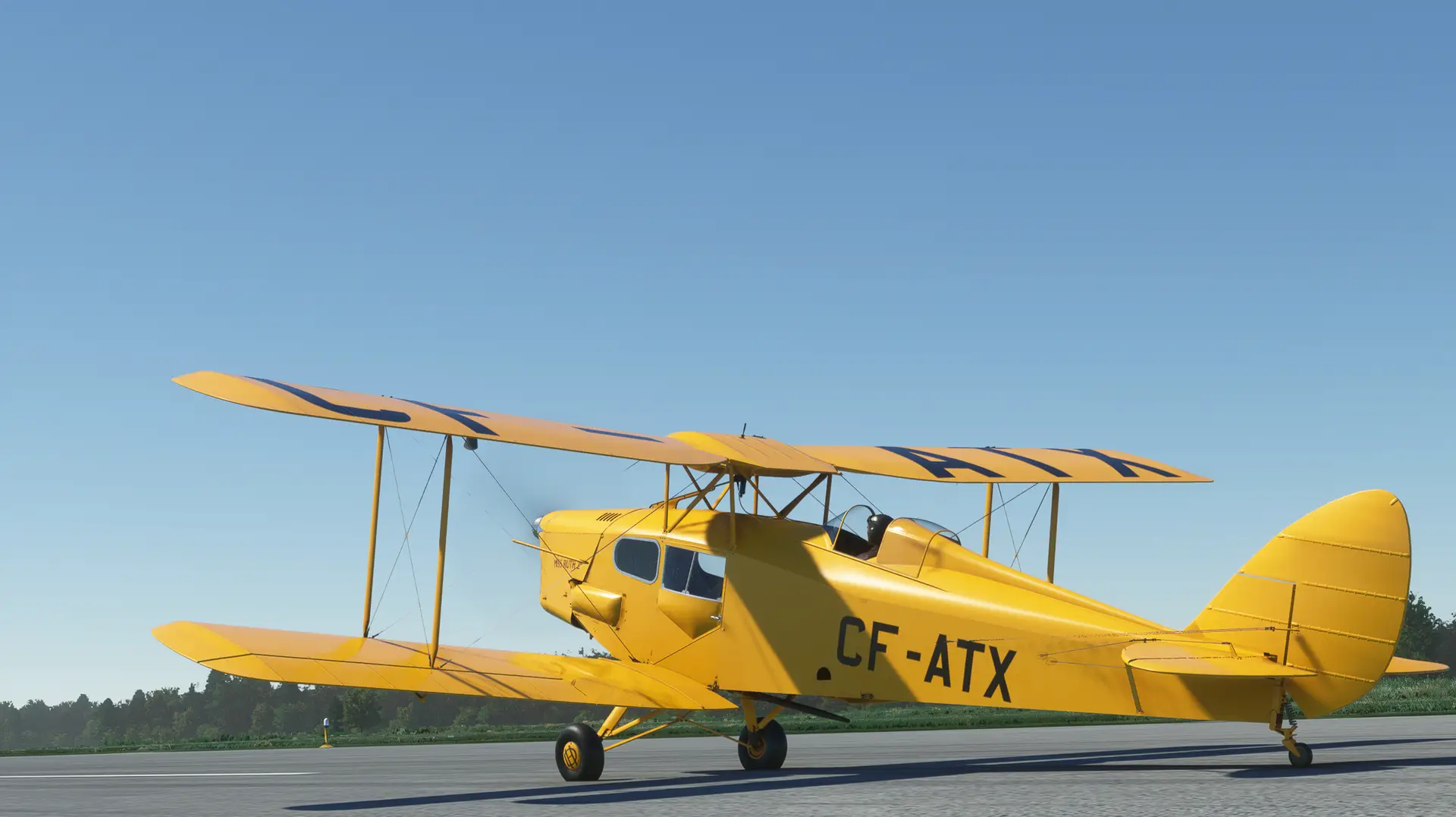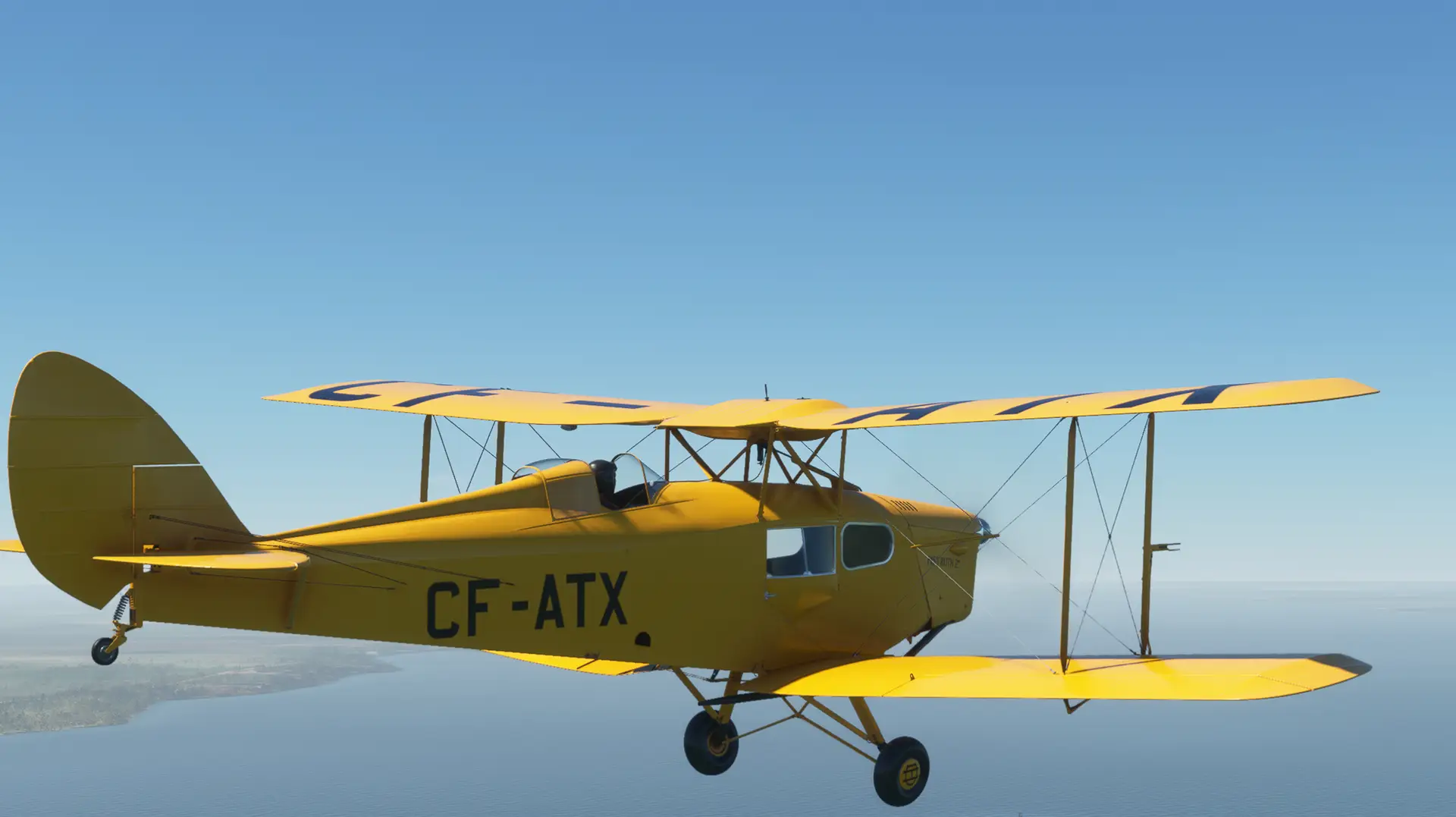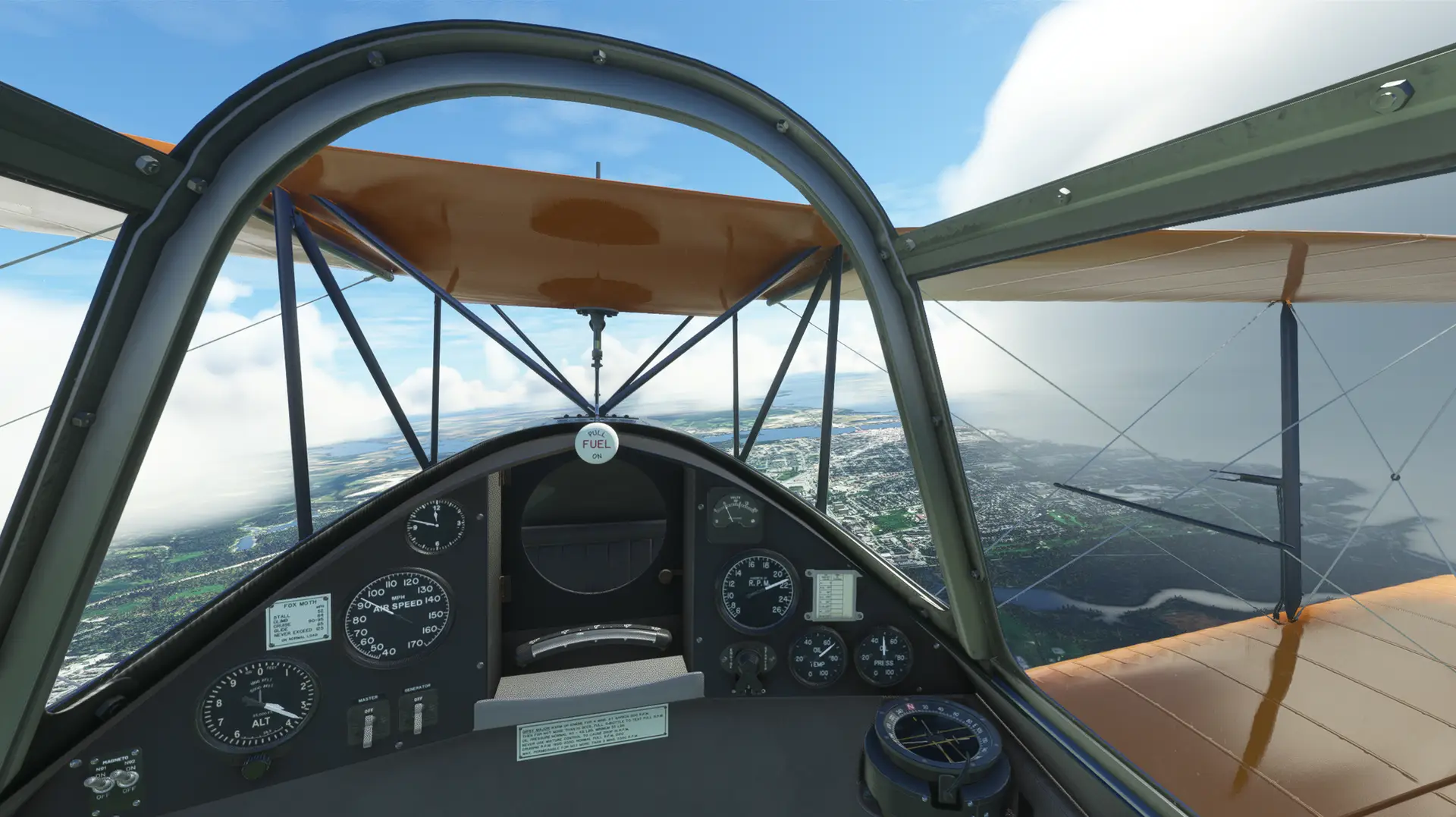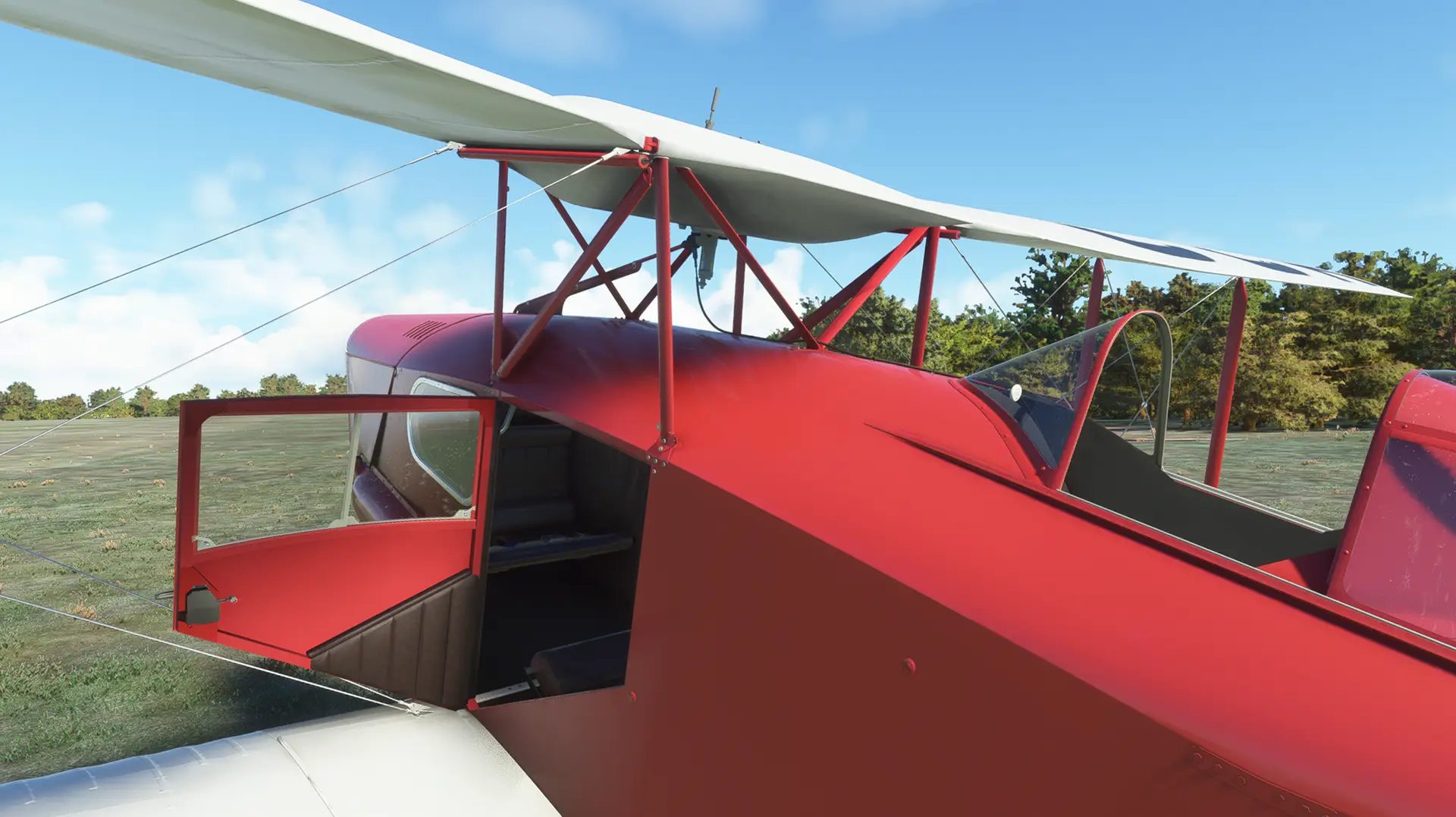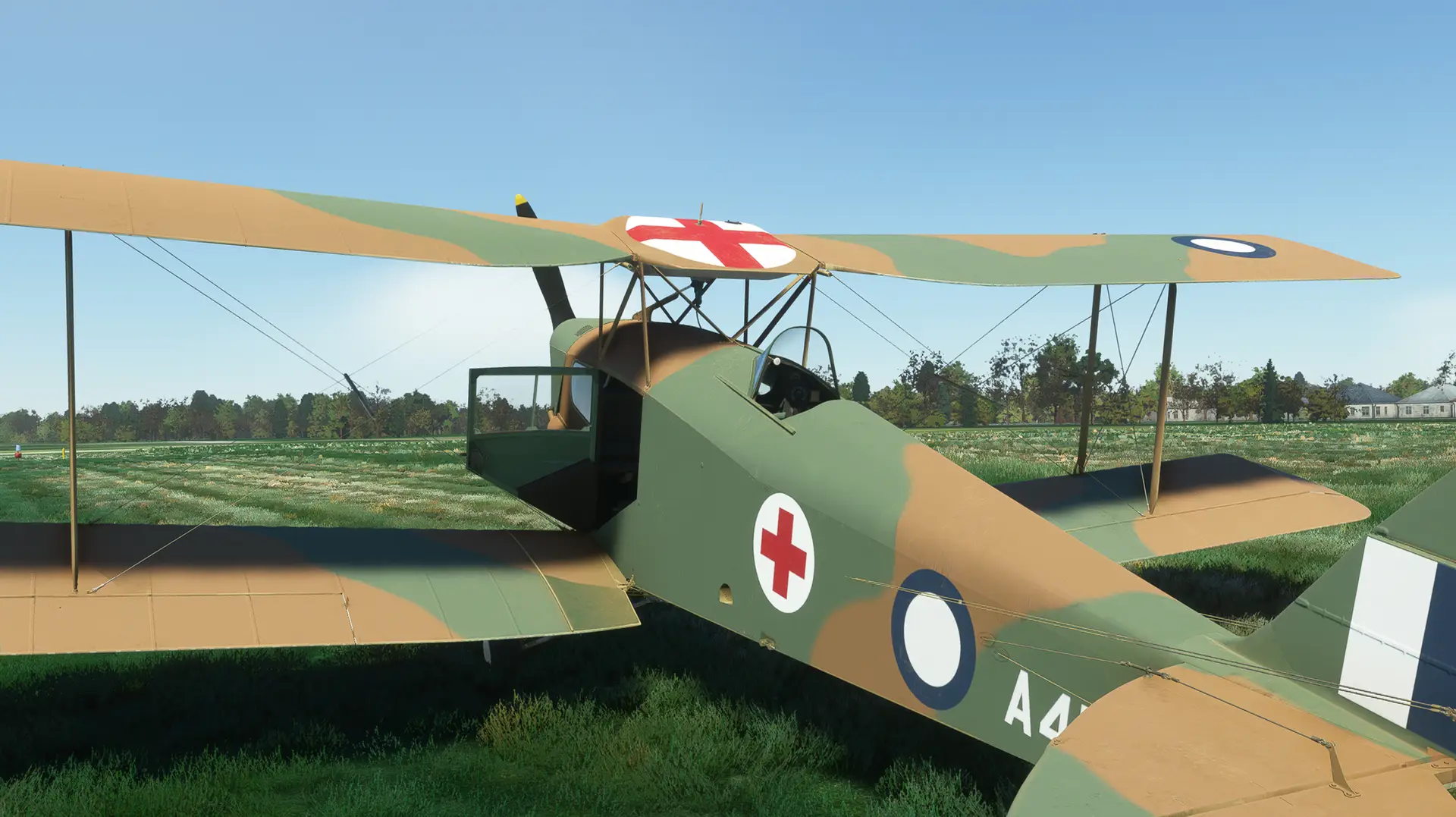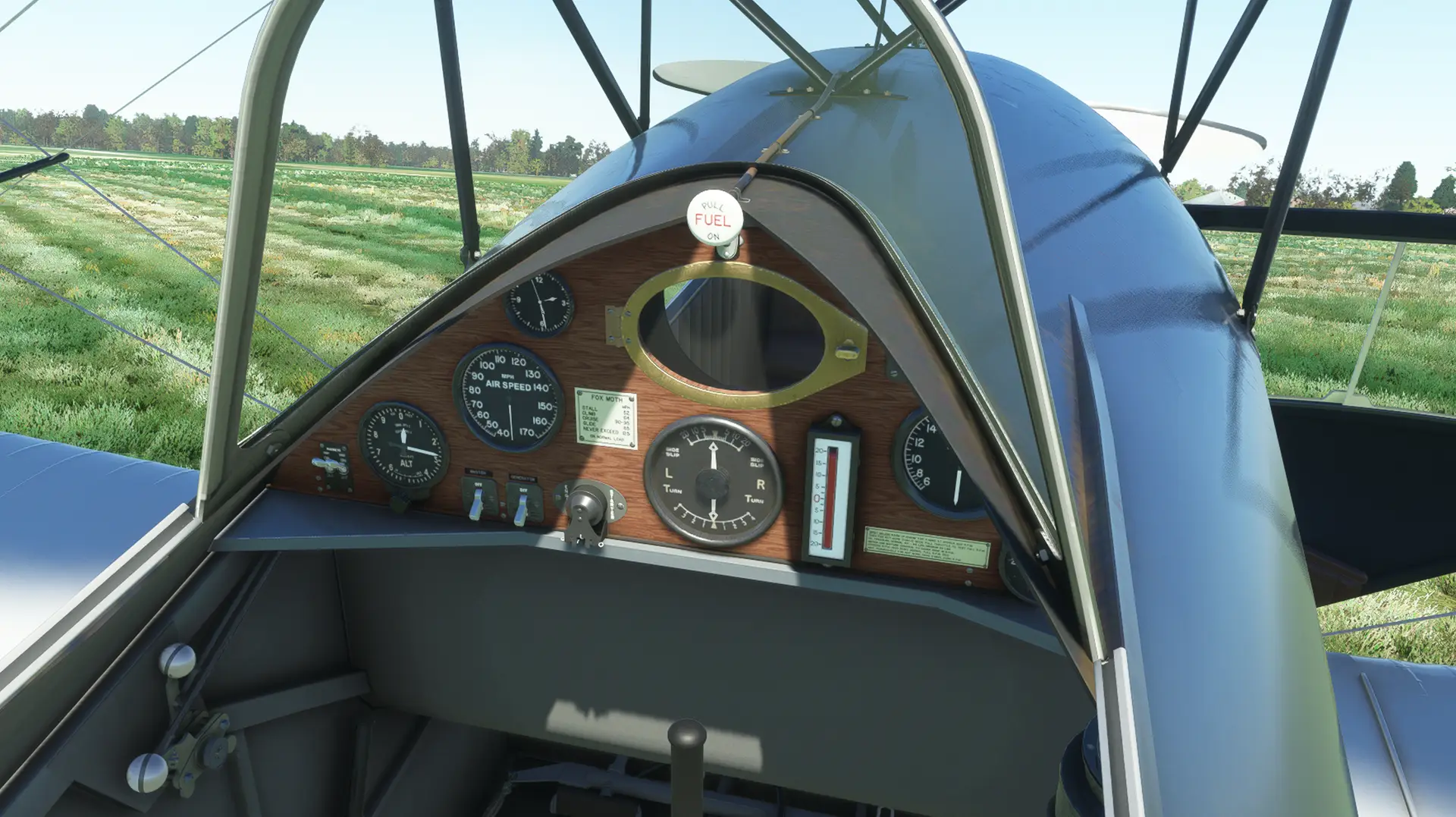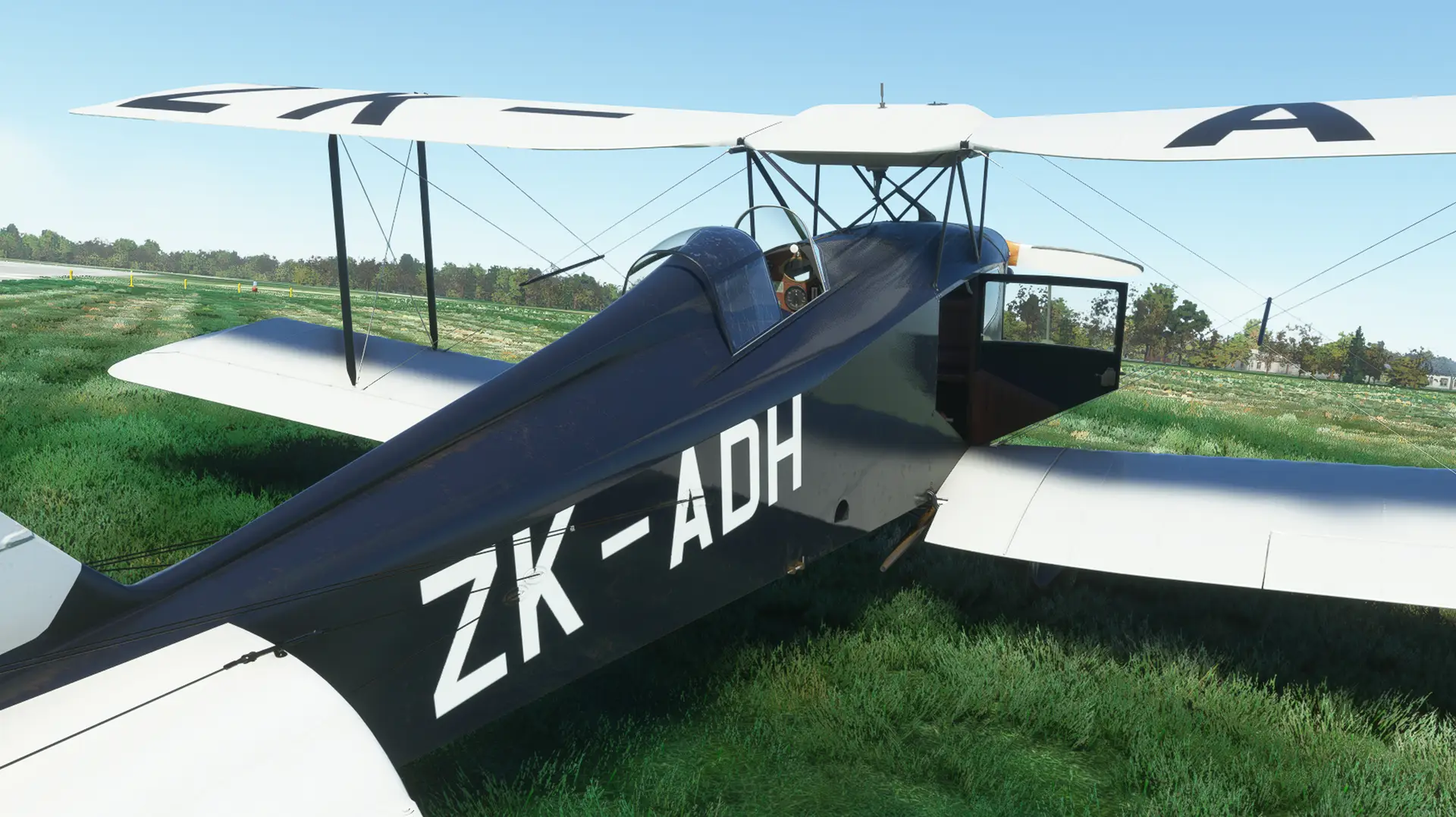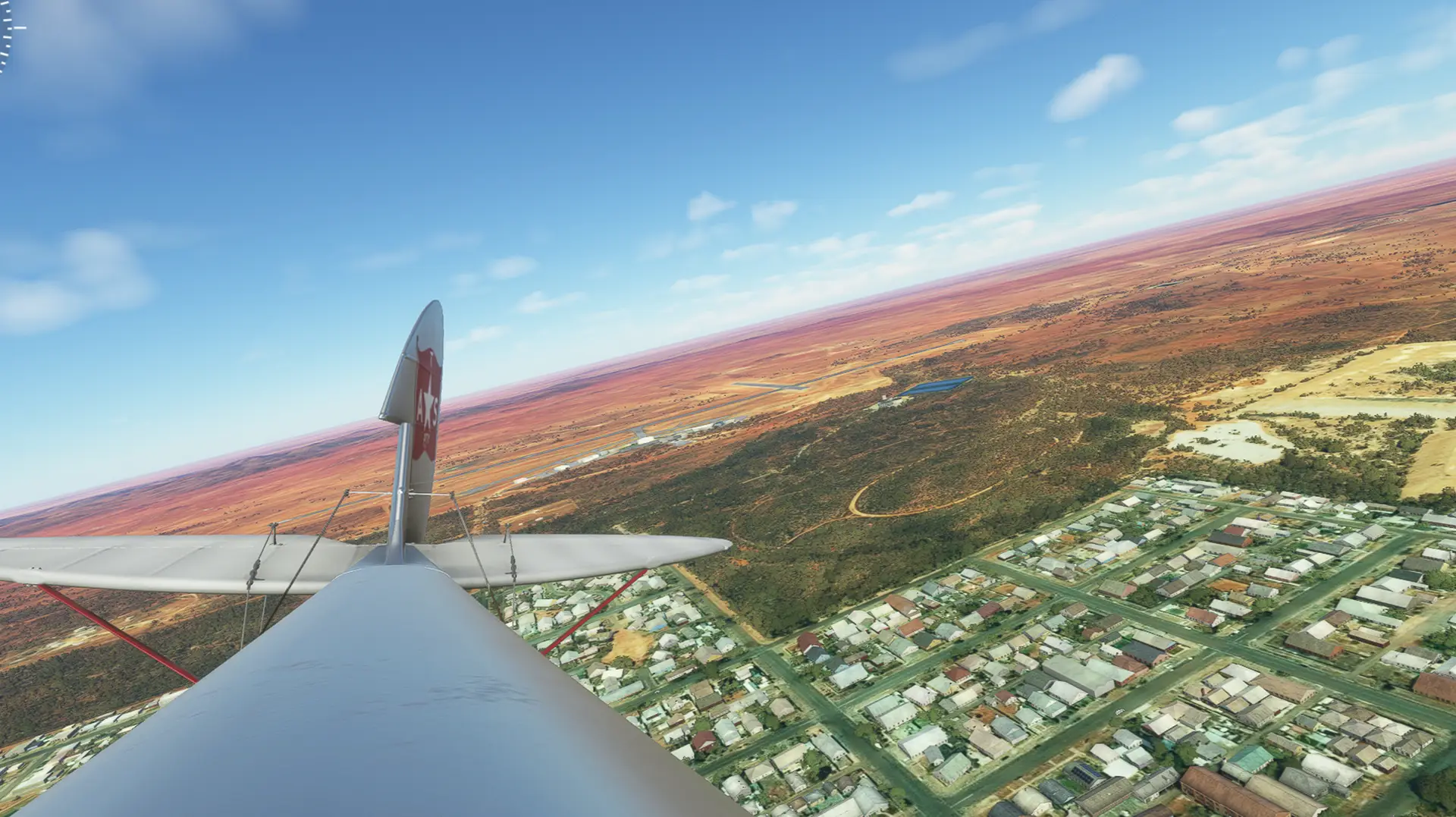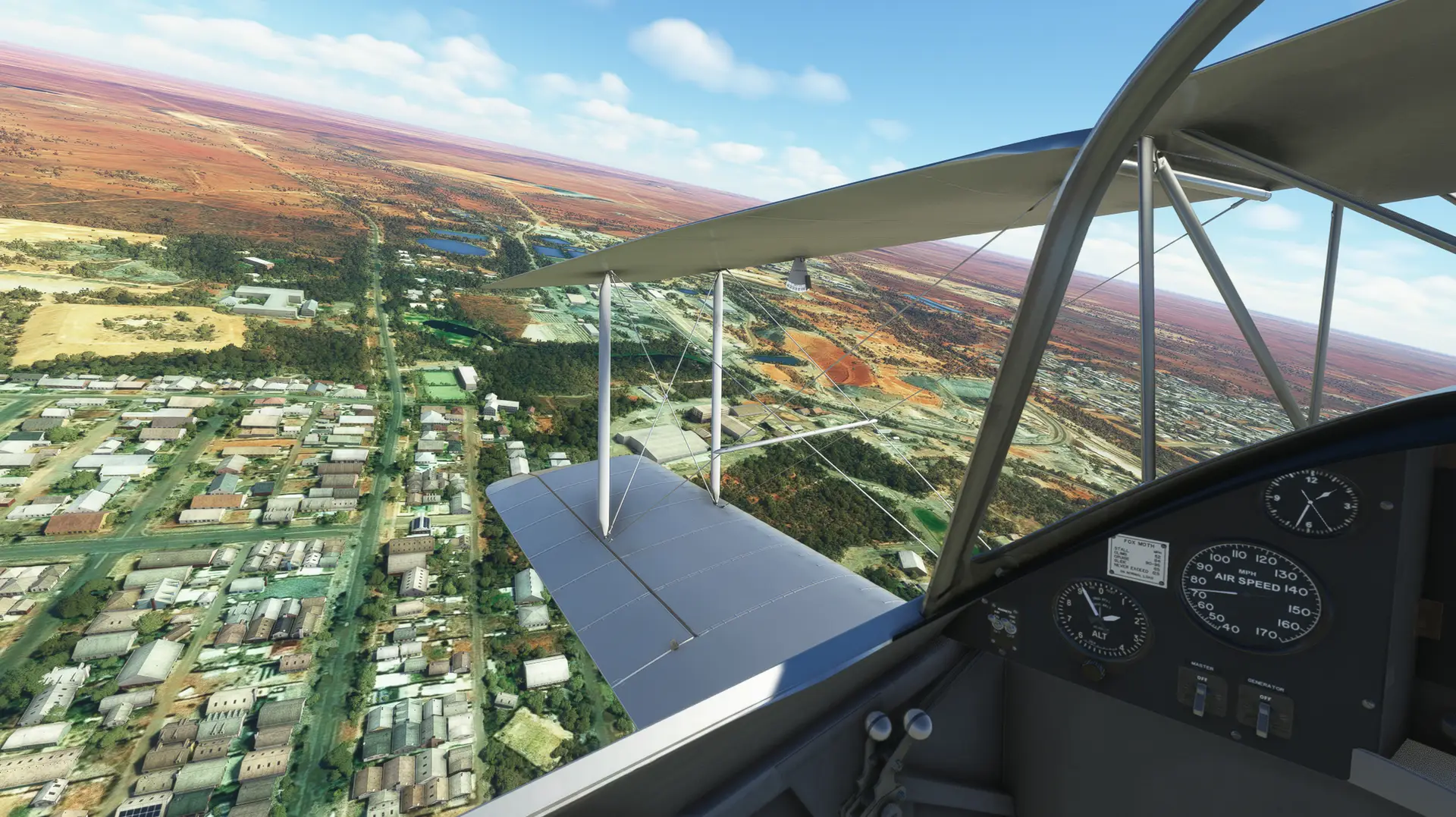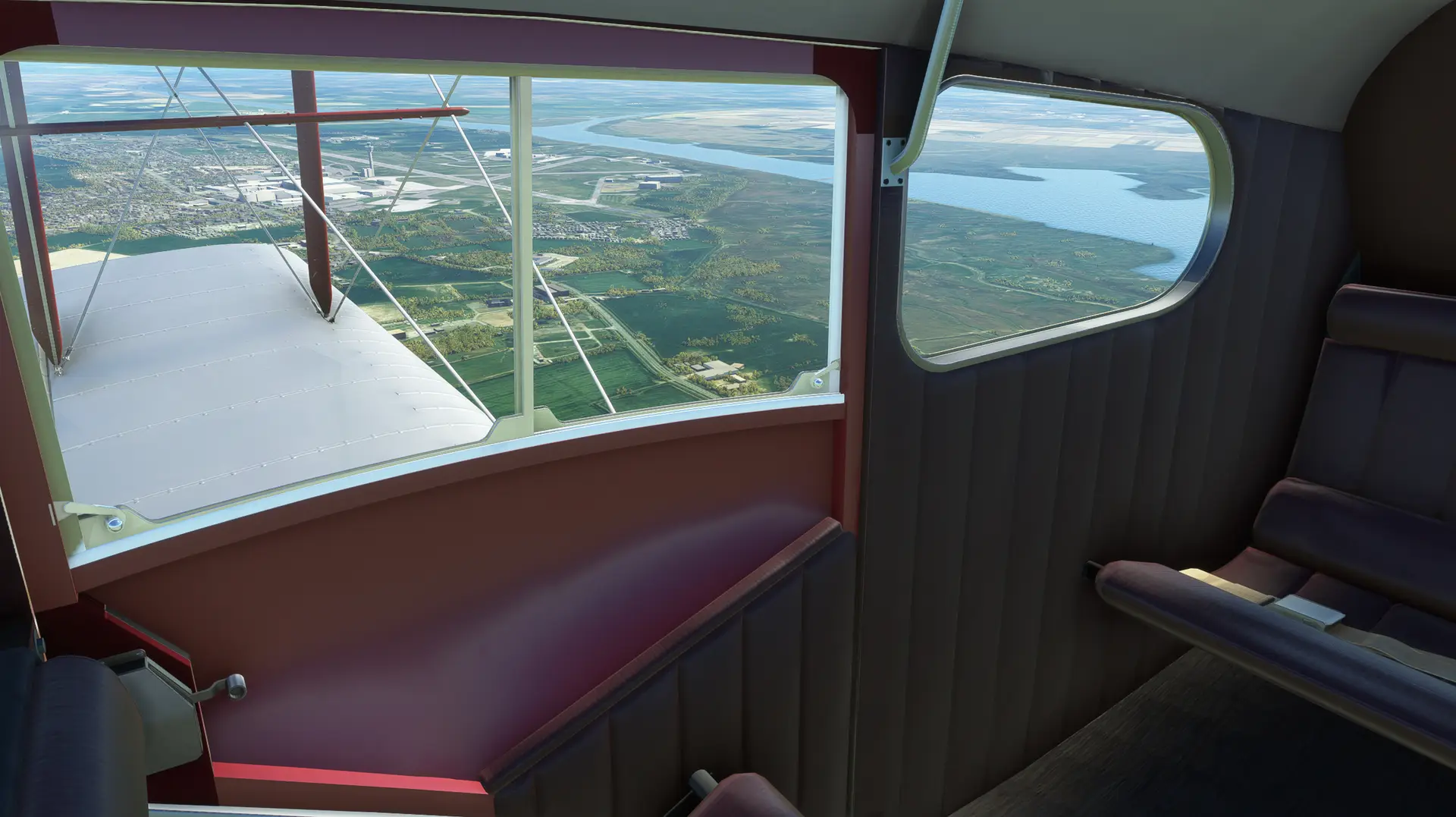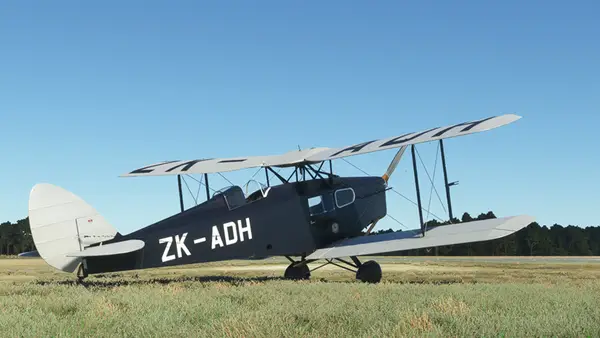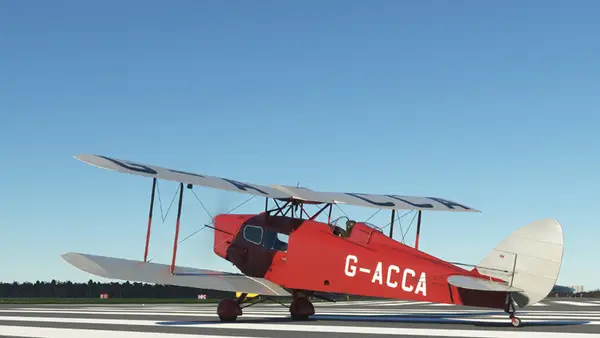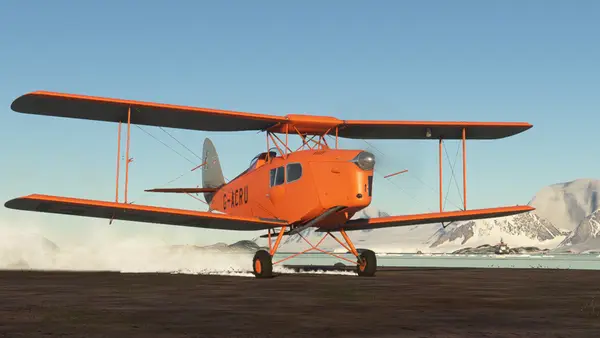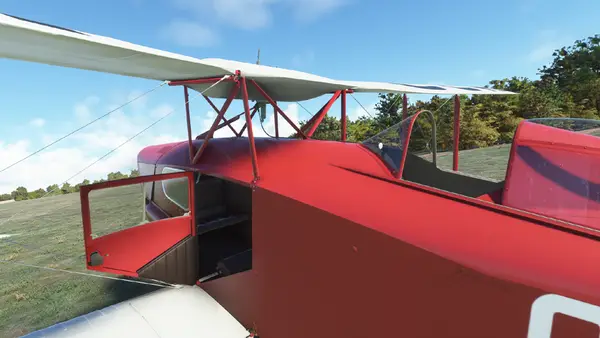The DH.83 Fox Moth is a single-engine biplane that was purpose-built to be a light, inexpensive passenger and cargo carrier. The aircraft took its first flight in March of 1932 and was introduced later that year. Crewed by one, the Fox Moth could accommodate up to four passengers and a light load of baggage. A total of 155 Fox Moths were built, and they were operated by airlines in Australia, New Zealand, Canada, and the United Kingdom. The aircraft was also used by the militaries of a number of countries including Brazil, South Africa, the United Kingdom, Yugoslavia, and Spain. The Fox Moth became renowned for its reliability and its efficient design, as exemplified by its long range (for the period) and ability to carry up to four people in addition to its pilot.
The DH.83 Fox Moth measures 25 feet, 9 inches in length and stands 8 feet, 10 inches tall. It features a traditional undercarriage, a standard tail unit, and has a wingspan of 30 feet, 11 inches. It is powered by an inline, inverted 4-cylinder engine that produces up to 120 horsepower and turns a fixed-pitch 2-blade propeller. The aircraft has a range of 375 miles, a service ceiling of 12,700 feet above sea level, and it climbs at 450 feet per minute. It cruises at 96 miles per hour, and has a top speed of 110 mph.
Aviators know the DH.83 as both nimble and forgiving, and it has proven to be an excellent aircraft for a variety of flying types. The version with floats allows aviators to operate from lakes, slowly flowing rivers, and other calm bodies of water. The added weight and drag of the floats slightly reduces its rate of climb, service ceiling, and top speed.
